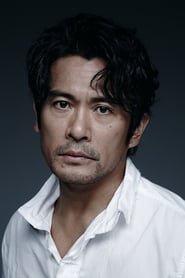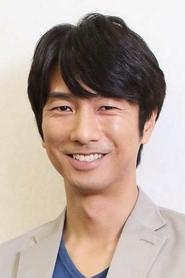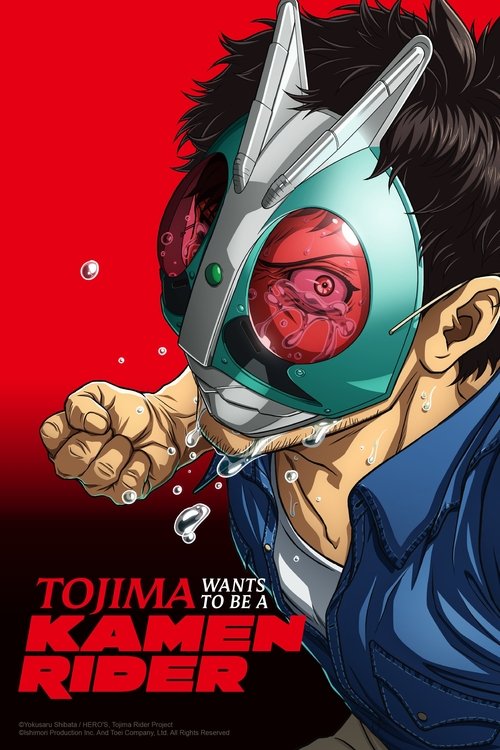
Ask Your Own Question
What is the plot?
The episode opens with seven trainees who have just passed the extremely difficult selection exam arriving at Komaki Air Base, home to the Japan Air Self-Defense Force Aviation Rescue Wing. They are introduced as aspiring pararescue jumpers (PJs), elite rescuers trained to save lives in extreme conditions. The trainees gather nervously in a classroom where the training unit leader, Horikoshi, begins a lecture. Suddenly, the sound of a helicopter approaching interrupts the session. The trainees look up to see Chief Instructor Usami Seiji descending from a UH-60J rescue helicopter, immediately establishing his commanding presence.
Usami wastes no time and begins the training year with a harsh, unconventional approach. The trainees are subjected to intense physical and mental challenges designed to push their limits. Usami's methods are strict and passionate, emphasizing resilience and teamwork. Each trainee harbors personal motivations and secrets driving their determination to become project leaders within the unit.
One trainee, Sawai Jin, stands out due to his emotional burden. As a child, he was lost in the mountains with his father and was rescued by an air rescue team, but his father did not survive. Sawai carries deep guilt and a desire to become a rescuer capable of saving lives like his father's. This personal history fuels his seriousness and sometimes causes friction with Usami's unconventional training style.
During a particularly grueling training session, Sawai rebels against Usami's methods, struggling to reconcile his emotional pain with the demands of the program. Despite his closed-off demeanor, Sawai eventually opens up and confesses his feelings and past trauma to Usami. Usami's reaction is unexpected; rather than dismissing him, he responds in a way that challenges Sawai to confront his guilt and channel it into strength.
The episode closes with the trainees facing the reality of the year ahead--a "hellish" training regimen under Usami's guidance. The group is united by their shared goal but divided by their personal struggles, setting the stage for intense development and camaraderie as they strive to become elite pararescue jumpers.
This detailed progression covers the arrival, introduction to training, individual backstory focus on Sawai, his emotional conflict and confession, and the establishment of Usami's leadership style and the trainees' resolve.
Related Titles
Browse All Titles →
What is the ending?
Short Narrative Ending: The first episode of "Pararescue Jumper" introduces seven students who have passed the rigorous selection test to become pararescue jumpers. They begin their training under the guidance of instructor Horikoshi Shoichi and other instructors. The episode sets the stage for their journey, focusing on their initial reactions and the anticipation of the challenging training ahead.
Expanded Narrative:
The episode begins with an introduction to seven students: Sawai Jin, Fujiki Sayaka, Shirakawa Tomoki, Hasebe Tatsuya, Nishitani Randy, Tokairin Yuuki, and Kondo Mamoru. These individuals have successfully navigated the extremely difficult selection process to join the Aviation Rescue Group, an elite unit dedicated to saving lives. The scene shifts to the Rescue Training Unit, where these students gather, visibly nervous, to receive instructions from their training unit leader, Horikoshi Shoichi.
As the students listen intently to Horikoshi's briefing, their faces reflect a mix of anxiety and determination. The atmosphere is tense, with an underlying sense of anticipation for the challenges that lie ahead. Suddenly, the sound of a helicopter interrupts the briefing, and everyone looks up to see a UH-60J rescue helicopter hovering above. This dramatic entrance sets the tone for the high-stakes training environment these students are about to enter.
The episode primarily focuses on establishing the characters and setting the stage for their journey. It does not conclude with a dramatic event but rather leaves the audience anticipating the rigorous training and personal growth that these aspiring pararescue jumpers will undergo in subsequent episodes.
As for the fate of the main characters in this episode, none of them face a conclusive or dramatic end. Instead, they are at the beginning of their journey, embarking on a path that will test their physical and mental limits as they strive to become part of the elite pararescue team. The episode ends with a sense of anticipation and readiness for the challenges that these characters will face in their training.
Is there a post-credit scene?
There is no publicly available information in the provided search results that confirms or describes a post-credit scene for the first episode of the 2025 Japanese TV series Pararescue Jumper (PJ ~航空救難団~). The available sources detail the premise, main characters, and general structure of the show, focusing on the intense training led by Chief Instructor Seiji Usami and the challenges faced by the new recruits, but they do not mention any specific post-credit content for Episode 1.
Without access to the episode itself or an official episode guide that includes scene-by-scene breakdowns (including post-credits), it is not possible to provide a factually accurate, detailed description of a post-credit scene for this episode. If such a scene exists, it has not been documented in the sources reviewed.
Is this family friendly?
The TV show "Pararescue Jumper," Season 1 Episode 1 (2025), is a drama centered on elite Air Self-Defense Force rescue trainees undergoing intense and rigorous training. It is primarily targeted at adult audiences, especially males and females in their 20s, and is not specifically designed as family-friendly content.
Potentially objectionable or upsetting aspects for children or sensitive viewers may include:
- Intense physical training scenes that depict extreme physical and mental stress, which could be distressing.
- Dramatic rescue scenarios that may involve injury or life-threatening situations, portrayed realistically.
- Emotional tension and psychological pressure experienced by trainees under harsh conditions.
- Possible depiction of harsh disciplinary methods or confrontations during training.
There is no indication of explicit violence, strong language, or adult themes like sexuality, but the realistic portrayal of rescue operations and the demanding training environment might be intense for younger or sensitive viewers.
Overall, while not explicitly inappropriate, the show's serious tone and intense scenes suggest it is better suited for mature audiences rather than young children or those sensitive to stress and trauma depiction.


































